Where do Guillemots Sleep?
We know puffins go to land, as we’ve seen them ‘at home’ on the stack off Canna, but Guillemots, do they go ashore as well? I asked Rob this question as we motored toward Loch Scresort in the enveloping night. Then suddenly, we found out. A short distance ahead were hundreds of the pretty little black and white birds all resting close together on the water surface, and I’m afraid we disturbed them; they dispersed in two big flocks either side of Zoonie’s hull and round behind us.
As we left the next morning, after our late night dram of whisky, followed by seven hours of restless sleep, he was motionless and vertical in the crystal clear water beside us while we passed slowly by. Just his smooth dappled head and generous whiskers showing above the surface, his well-rounded and speckly body suspended beneath and his eyes tight shut; until he heard us, then with a hissing of air through his nostrils, he rolled backwards in a languid movement and dived away from Zoonie’s intrusive hull. Oh dear, we are disrupting the peace. What was he?
It was one of those magical mornings you wish you could bottle and keep forever. The beaten-silver water surface reflecting a sky full with a variety of cloud types and the mountains still hazy lavender blue. This could be the last time we see these natural beauties from the sea on board Zoonie, but then we have been so fortunate for the last two years to see the Highlands in all their moods.

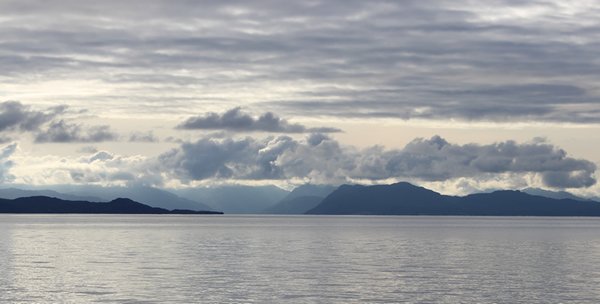
There is something powerfully spiritual in being in the presence of this landscape formed by the violent forces of nature into something, not created by man, nor changed by him, and in many places not even touched by him, the real wilderness. We stand alone before a force much greater than us, where we can find ourselves and each other, and our relationships without the complication of society, by being free to be individuals.
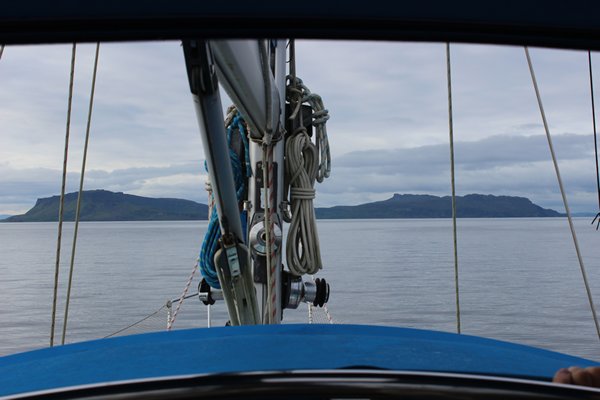
Staring up at their beauty gets the old mind wandering and also, I have been reading ‘Soil and Soul’ by Alastair McIntosh, whom we met while we were on Iona, at a talk he gave in the local community centre we attended with cousin Liz. His hopes are that humanity can find a way back to a more community minded state that puts the corporate demon and worship of Mammon (money) into a proper perspective.
One of the major projects he has been involved in during his career as ecologist, new economist and campaigner for community, global lecturer and activist, was being part of the team that successfully campaigned against the plans for a superquarry to eat through the mountain called Roineabhal, on the south east tip of South Harris. We passed the mountain both intentionally on our land trip, and as we came down The Minch a couple of days ago; and it was awe-inspiring to see it still intact because of the efforts of numerous people including Alastair; a strenuous campaign that lasted a quarter of a century.
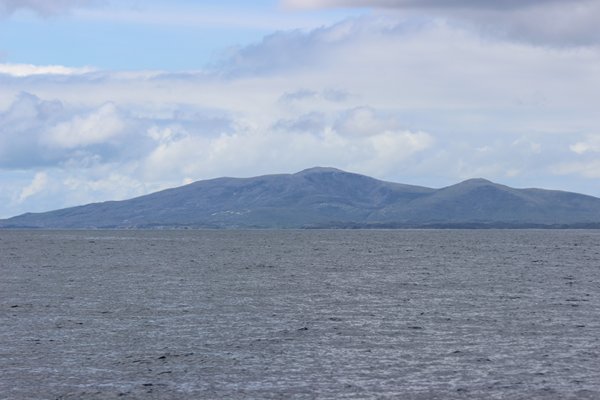

It took almost super human effort to keep this mountain intact
The day’s passage was a shorter one of just eight hours and after only four we were passing the renowned Ardnamurchan Lighthouse, designed by our friend Alan Stevenson (Robert Louis’ uncle) and built in 1849 using granite from the Isle of Mull. A must for a visit on our land tour. It stands proud, and in my view magnificent, at the westernmost point of the British mainland and I had a great time using both lenses on my camera to take dozens of photos at a variety of angles as we passed. How grand it is to indulge in digital photography and not have to pay for film!


The cloud formations behind the lighthouse were changing rapidly

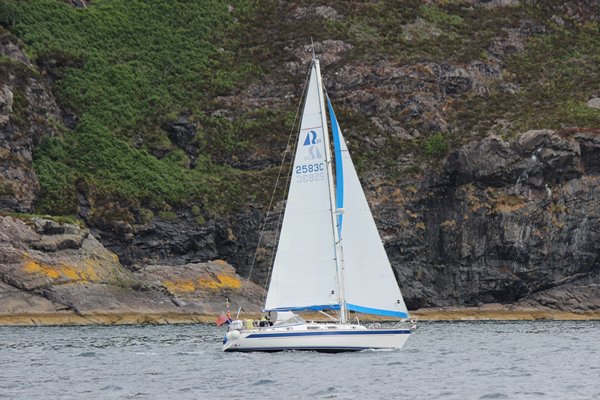
A passing yacht sailing in the Sound of Mull
Tobermory was busy with a giant cruise liner moored outside the harbour and a smaller one inside. We sailed on trying to keep Zoonie’s speed down to arrive at the entrance to Loch Aline an hour or so after the start of the rising tide. We were on the Spring Tide low water (Mean Low Water Springs) being barely 0.4 metres above chart datum, (the depth that is always there) at the shallow entrance and there would not be enough depth for Zoonie. So, we must have looked a little odd, sailing under reefed genoa, in a perfect sailing wind, plus we had the freshly washed blue sheet drying over the line across Zoonie’s stern and billowing nicely. What kind of rig is that?
Stuck in the mud, nicely.
So we are back in a favourite spot, where Zoonie’s anchor is in the best possible glutinous muddy bottom and the wide belt of trees, that grow from shore line up the hillsides, keep down drafts at bay. We have walked to the loch entrance along a new track to us, chatted with and waved to fellow cruisers, and hopefully on Sunday 9th we will be able to move on again to Loch Tarbert on Jura’s west coast for a one-night stop.
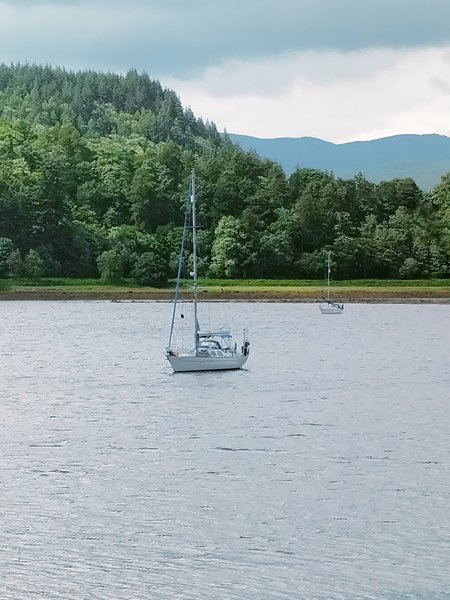
(Answer to earlier question; A seal and I bet you got it.)